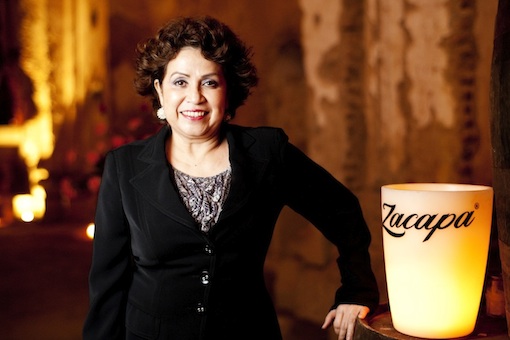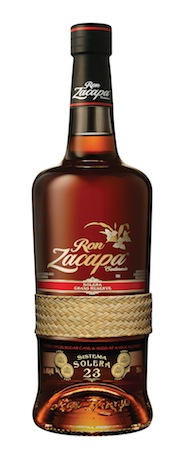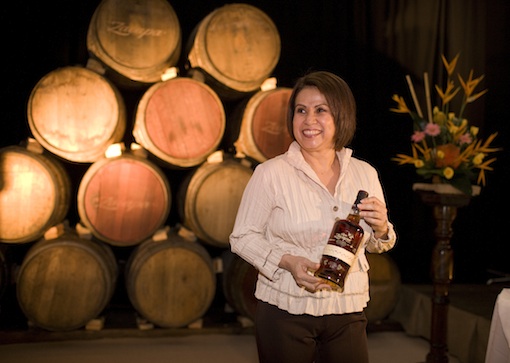Above: Lorena Vasquez
Making Guatemala’s Ron Zacapa 23 is as much a science as an art.
And its story starts, naturally, with chemistry.
Lorena Vasquez always had a gift for identifying aromas and flavours, even as a child. As she grew up, she studied pharmaceutical chemistry, ultimately specializing in sensory analysis and food technology.
Now, she is the master blender of Ron Zacapa.
Zacapa 23 uses virgin honey as a raw material, obtained from a concentrate of sugar cane juice. It is then fermented with a proprietary yeast extracted from pineapple.
High in the mountains of Guatemala (2,300 metres above sea level), it is then put to bed, with its own solera aging system in American white oak barrels that previously housed American whiskies.
The second stage of the aging prices involves American white oaks barrels with a deep burn, until Zacapa is aged in used sherry casks.
The fourth and final stage involves barrels that previously aged Pedro Ximenez wines. (There is even a fifth stage for the ultra-luxury Zacapa XO, which occurs in French oak cognac barrels.
“This whole process is unique to Zacapa,” she says.
And each bottle is its own piece of artwork — with its “petate” palm band, each of which is individually hand-woven by women from rural communities in Guatemala.
And it’s in large part thanks to Vasquez, who has worked in the rum industry for the past 28 years.
“It’s not a job,” she tells Rum Journal. “It’s really my passion. I enjoy the complexity of rum production, and sharing it with people around the world.”
***
For this Rum Journal, we leave the tasting to Vasquez:
“It’s a complex, yet sophisticated and friendly rum, with hints of vanilla, toasted wood, dried fruits, chocolate and tropical fruits,” she says. “Truly of great complexity.”
— CJ


